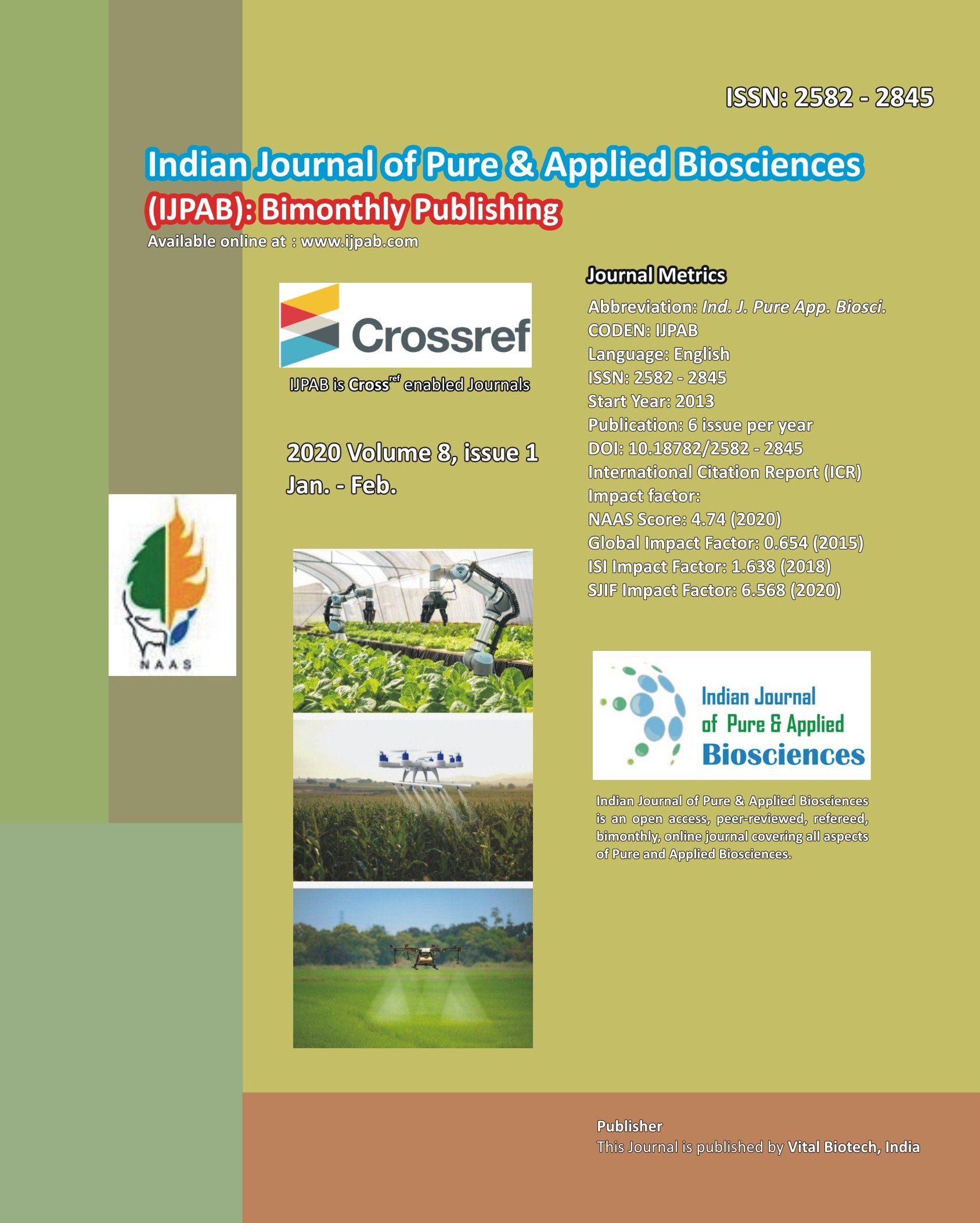
-
No. 772, Basant Vihar, Kota
Rajasthan-324009 India
-
Call Us On
+91 9784677044
-
Mail Us @
editor@ijpab.com
Indian Journal of Pure & Applied Biosciences (IJPAB)
Year : 2020, Volume : 8, Issue : 1
First page : (240) Last page : (242)
Article doi: : http://dx.doi.org/10.18782/2582-2845.7429
Proximate Composition of Apricot (Prunus armeniaca) cul. Halmun in Cold Region of Ladakh
Towseef A. Wani1*, Quraazah A. Amin2, Fauzia S.2, Dorjey N.1, B. A. Zargar1, Phuntsog Tundup1, Kunzanglamo1, Deldan N.1, R. Safal1, M. A. Beigh2, Muneebur Rehman3 and Shanawaz A. Dar3
1Krishi Vigyan Kendra Leh, SKUAST-K, J&K
2Division of Food Science and Technology, SKUAST-K, J&K
3HMAARI Leh, SKUAST-K, J&K
*Corresponding Author E-mail: towseef46@gmail.com
Received: 9.03.2019 | Revised: 13.04.2019 | Accepted: 20.04.2019
ABSTRACT
Ladakh, the cold arid region of Jammu and Kashmir, India, is geographically located between 32o5′ to 36o north latitude and 75o15′ to 80o15′ east longitude. It is comprised of the Kargil and Leh districts of J & K state spread over a geographical area of 96,701 km2 (accounting for 43% of the area of the state and 75% of the cold arid region of India). Prunus armeniaca is commonly known as apricot and belongs to family Rocaceae. The apricots are sweet to taste and used in the preparation of jams, jellies, squashes. Present study was carried out to know the proximate composition of apricot fruit variety Halmun. Apricot fruit consisted of moisture, crude protein, crude fat, crude fiber and ash as83.38±2.53, 3.00±0.10, 1.33±0.05, 2.29±0.24, 4.64±0.15 respectively.
Keywords: Apricot, proximate, moisture, Halmun, Leh
Full Text : PDF; Journal doi : http://dx.doi.org/10.18782
Cite this article: Wani, T.A., Quraazah A. Amin, Fauzia, S., Dorjey, N., Zargar, B.A., Phuntsog Tundup, Kunzanglamo, Deldan, N., Safal, R., Beigh, M. A., Rehman, M., & Shanawaz A. Dar. (2020). Proximate Composition of Apricot (Prunus armeniaca) cul. Halmun in Cold Region of Ladakh, Ind. J. Pure App. Biosci. 8(1), 240-242. doi: http://dx.doi.org/10.18782/2582-2845.7429

